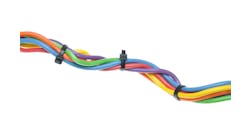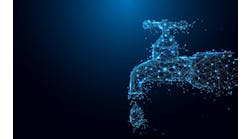Noise in control loops can wear out valves and get amplified by proportional and derivative action. The filter should reduce noise to an acceptable level without appreciably slowing down the loop. I have enlisted the help of key industry experts to provide their guidance. I have also noted some alternatives to the filter and offered an overview of the sources of noise.
This is the 4th in a continuing series of practical and useful questions on PID tuning raised by Brian Hrankowsky a knowledgeable process control specialist in the pharmaceutical industry after having been present at a panel session on controller tuning at ISA Automation Week 2010 developed by Michel Ruel. Brian is not representing his company in these posts. The questions and answers in all of these blogs will be addressed in much greater detail in the long overdue 4th edition of my book Tuning and Control Loop Performance being published by Momentum Press.
High frequency noise and spikes can originate from electromagnetic interference. Notable sources are ground loops, ground potentials, and variable frequency drives. Low signal sources and cables are particularly vulnerable such as thermocouple extension wire and pH electrode lead wires. A common complaint for pH measurements is the appearance of a spike. Wireless transmitters can eliminate this noise for pH electrodes as shown on slide 66 of "ISA-Edmonton-Effective-Use-of-Measurements-Valves-and-PID-Controllers." Good wiring, routing, and grounding practices and wireless are the preferred solutions leaving only a small amount of high frequency noise that can be address by the input signal filter inherent in digital control systems.
Sensor noise that is inherent in the principal of operation of instruments such as vortex meters and Coriolis meters are best addressed by sophisticated proprietary filters developed by the manufacturer based on intelligence of the exact nature of the noise. The job of the user is to mostly to reduce process noise. The first choice is to reduce the source of the noise especially when it is the result of some deficiency in equipment or piping design or instrument installation.
For purposes of this discussion any noise that originates in the process will be considered process noise most often associated with changes in velocity, phase, and composition. Differential head and vortex meters become noisy for fluctuations in velocity profile. High velocities make pH electrodes noisy especially for low conductivity fluids (high purity water being the worst case). Surface level measurements, such as radar, become noisy for turbulence, bubbles, and foam. Bubbles will cause noise in most flow meters except for the new Coriolis meters with sophisticated software to actual measure bubble concentration. Bubbles touching dissolved oxygen or pH electrode are quite disruptive. Water droplets hitting temperature sensors in desuperheater and steam jacket outlets and reflux hitting temperature sensors in columns cause highly unpredictable noise. Liquid in sensing lines that are suppose to be gas filled and vice versa causes havoc with differential pressure and pressure measurements. Lack of uniformity in composition is a principal source of continual pH noise particularly bad for operating points on the steep part of the titration curve. For operation near neutrality with strong acids and base even the highest degree of back mixing is not good enough to prevent noise. For inline systems (e.g. static mixers), the back mixing is negligible. The focus of this blog is how to deal with process noise that is not fixed at the source.
I asked three experts with extensive practical experience what they did for filtering noise; Greg Shinskey, Michel Ruel, and Jacques Smuts.
Fellow Hall of Famer Greg Shinskey offered this succinct reply:
"The second-order Butterworth filter gives superior noise rejection for a given phase lag and is effective both as a derivative filter and as a tunable filter for proportional action. While I haven't seen much need for it, it has clearly outperformed first-order and other
second-order filters. See page 58 of my book Feedback Controllers for the Process Industries for a comparison against a first-order derivative filter in step response."
Michel Ruel who I did Control Talk columns in Nov 2012 "Ruel Rules for Use of PID, MPC, and FLC", in Nov 2009 "Show Me the Money - Part 1" and in Dec 2009 "Show Me the Money - Part 2" offered the following advice and an Excerpt on Filters from his book Fundamentals of Process Control that serves as a technical manual for TOP Control in Quebec City.
- If period is known, moving average will completely remove periodic noise
- By default, 1st order is first choice, introduces less apparent dead time than moving average for similar noise reduction
- If possible, 2nd order Butterworth is an excellent choice since it is better for noise reduction with less apparent dead time (but will produce a slight overshoot on a bump test).
Jacques Smuts who I did a Control Talk column in Aug 2012 "Control Loop Improvement" offered the following answer to my question on filters:
"I use filtering only when really necessary. Actually, I am more likely to take a filter out than to add one. Notch and higher-order filters may have some advantages in instruments where the signal noise is definitive. Process noise is too unpredictable for these more sophisticated filters to be generally applicable"
As a general guideline, I only introduce enough of a signal filter to keep the noise in the output of the controller from exceeding the deadband and resolution limit of the valve that would cause premature failure of the packing and inflict noise on other loops. For compressor, furnace, and liquid pressure control what seems like insignificant transmitters damping adjustments and signal filters can cause shutdowns. Default transmitter damping settings larger than 0.2 second can be hazardous for these cases.
The amount of filter time effectively converted to deadtime increases as the ratio of the filter time to the largest time constant in the process increases. If the filter time becomes the largest time constant in the loop and is much larger than the total loop deadtime, an increase in filter time will provide a smoother control and allow a higher PID gain giving the allusion of better control until product quality deteriorates or unit trips occur.
Integrating processes are more sensitive to signal filters than self-regulating processes. As the filter time approaches or exceeds the process deadtime, the deterioration becomes more noticeable. Integrating processes do much better if a secondary lag is eliminated or compensated by the addition rate time equal to the lag time.
Runaway processes are the most sensitive to signal filters. If the secondary time constant approaches the primary time constant associated with positive feedback, the maximum allowable PID gain approaches the minimum PID gain that is proportional to the inverse of the process gain. The closing of the window of allowable controller gains makes the loop unstable for all tuning settings. My book Tuning and Control Loop Performance has equations that detail the effect of the secondary lag on the ultimate period and ultimate gain and the closing of the window.
If the process has a slow and gradual response due to a large process time constant or small integrating process gain, a PV velocity limit can screen out noise without introducing a secondary lag or deadtime. The velocity limit must be judiciously set to not slow down the fastest true process excursion and must be turned off when the controller is in manual for maintenance (e.g. calibration and testing) and observation of noise.
If the process has a fast initial response (small process time constant or large integrating process gain), a threshold sensitivity limit can screen out noise with a minimal deadtime that is the limit divided by the rate of change of the process variable for a disturbance. However, a threshold sensitivity limit will cause a limit cycle unless an enhanced PID developed for wireless is used. While normally I prefer signal filters to be set in the DCS for visibility and maintainability, in order to increase wireless battery life, I suggest the wireless transmitter damping adjustment be used to prevent unnecessary transmissions from noise exceeding the wireless trigger level. If the transmitter is replaced, the damping must be set to the correct value.
Middle signal selection of triplicate sensors can eliminate noise from a sensor without introduction of a lag or delay if the measurement is not the middle value. If the measurement is the middle value, the noise is reduced to the delta between the measurement and the new middle value.
For more information on the importance and methods of reducing noise, check out the Control Talk blog on July 7, 2012 "What are the Alternatives to Reduce Noise?" and on Feb 29, 2012 "What are the Best Transmitter Damping or Signal Filter Settings?"




